PERTH — Western Australia is one of Oceania’s best sources of grotesquerie. In the same way the Southern States serve America, Western Australia provides an endless supply of serial killing tales, small-town hatred and supernatural horror. Melbourne might be the place to visit if you want to see Victorian Gothic buildings and spooky thickets of pale, twisted eucalypts. Northern Queensland is fine for gigantic nettle trees, box jellyfish and coastal taipans. But West Australian grotesquerie is far more depressing and resilient, probably because WA (Western Australia) is larger than Greenland and every administrative region in Siberia excepting Yakutia. There aren’t enough yuppies in the world to gentrify an area that size.
Before British colonisation, the state of Western Australia was roughly divided by a horizontal “circumcision line” that lay just above Perth. The tougher Aboriginal groups lived above that line, in desert that was 40˚ Celsius (104˚ F) on an average day. On flat ground, they chased red boomers and blue flyers, and raided emu nests. In the hills, they hunted fat, twitchy wallaroos. By the coast, they speared fish and crabs. They chewed pituri and battled rival tribes. Young men went “through the lore” and got circumcised in their teens – a much braver ritual than what Islam and Judaism came up with, especially for a culture that didn’t have metal tools. To this day, people in towns like Roebourne (where I spent part of my childhood) have a folklore with some of the strangest monsters ever invented: a snake deity called the wharlu that eats people with its arsehole, murderous doppelgangers known as jinnagarburri with feather-duster feet that don’t leave tracks, invisible fairies called the junna who can only be detected by their shit-like smell. This is just the stuff they’re willing to share with “whitefellas” – there’s undoubtedly plenty more.
Below the “circumcision line,” though, it’s always been wetter than Diana Mitford after the Nuremberg rallies. I once read a diary passage by Sir Charles Fremantle, from 1829, when he claimed the area for George IV. He took a paragraph to describe how awed the British sailors were to see hundreds of black swans in flight across the marshland – then added that his men “thought nothing” of roasting seven or eight birds a night. I remember throttling the animals as a five-year-old on family picnics at Lake Monger, so I don’t imagine it was particularly hard for the uncircumcised Aborigines until Britain got hungry for Lebensraum. Most likely, any toddler with Herculean tendencies could strangle enough swans in an afternoon to feed his whole family.
Even the venomous reptiles near Perth are disappointing. Our most common is the dugite, a snake with the LD50 of a black mamba and the personality of Jimmy Carter – since 1994, it’s only been lethal on paper. If you’re ever in Perth, try visiting the nudist beach at Swanbourne, which happens to be next door to an SAS firing range. In the 70s and 80s, the grassy dunes near the barracks were crawling with pervs looking for naked girls to pull ‘emselves off to. (I suppose our brave SAS commandos were left with some rather different ‘mopping up’ than they imagined before enlisting.) Today the beach is mostly deserted, but you’ll find a dozen signs, at the edge of the dunes, reading “BEWARE: DUGITE MATING SEASON – NOVEMBER TO FEBRUARY.” That’s how low dugites have sunk: their only job now is to frighten away Leopold Bloom types, the losers of the snake world fending off the losers of Australian society.
As it currently stands, the wealthier parts of Perth could supply enough petty stupidity for an entire shelf of Flaubert novels. In fact, WA is probably where the future of Australian literature lies. It’s the same sort of middle-of-nowhere place that produced Poe, Gogol, and Flannery O’Connor. Plus, it’s too provincial to create many people as synthetic as Bret Easton Ellis, too stagnant and unambitious to be a metaphor for anything post-modern. Its upper classes will use just as many vicious tactics (and Hayek quotations) to get money as any other elite, but they can’t write cheques without totally embarrassing themselves. Give them $10,000 to spare and they’ll spend it on some kind of novelty fridge magnet for lower back pain, even after Heath Ledger showed them the real way to solve that problem. Give them $150 million when they’re in a charitable mood and they’ll build a cultural precinct or stadium or some other “iconic” building that will finally “put Perth on the map,” only they’ll place it behind a bus depot or somewhere on the outskirts of town. It started in the early 70s with the Perth Concert Hall, a Brutalist building that was supposed to rival the Sydney Opera House. It was so successful it now gets rented out to private schools for graduation ceremonies. Then there was CityWest, a strip mall topped-up with a Buckminster Fuller dome. (Maybe it was meant to represent a literal construction bubble.) We also have a deserted Entertainment Centre, a hyena-clit belltower (designed, like the Concert Hall, to rape Sydney’s Opera House) and major skyscrapers with creative names like “Central Park” and “City Square.”
One area where Perth isn’t a backwater, though, is death porn. True Crime might well be the most vital part of Australia’s publishing industry – even the “literary” writing this country produces needs large amounts of truth and crime to sustain it – which is why death porn compilations are always a welcome sight, even when the writing is patchy.
Catherine Birnie: The Better Half of the Serial-Killer Couple
Women Who Kill: Chilling Portraits of Australia’s Worst Female Murderers is a good addition to the genre. It also has a very West Australian focus: one of the authors, Ruth Wykes, ran AIDS education programs at Bandyup Women’s Prison and met some of Perth’s most interesting murderesses. The book’s most detailed chapter is the first one, devoted to husband-and-wife team David and Catherine Birnie, who raped and killed four Perth women in 1986 – all within a month. While David Birnie killed himself in 2005, his wife is undoubtedly Australia’s most infamous female serial killer and the couple inspired at least one copycat killing (in Queensland) plus a few suspected copycats who haven’t been caught yet. The book features a few other killers held at Bandyup, and adding nicely to the mix are some Melbourne gold-diggers and a rural cannibal from New South Wales. Padding is provided by a couple of Maori killers who are more sad than scary, and technically not Australian – Tracy Jean Goodman may have gotten the longest sentence ever given to a woman in New Zealand but seems to have been a non-violent cat burglar until she killed an old lady (for unclear reasons) during a robbery. As far as victims go, old ladies don’t sit well with juries, so that explains the length of the sentence. And there’s nothing else that makes Goodman interesting enough to write about – she doesn’t come across as a sadist, a psychopath, or anything more than a Valium junkie born into the wrong social class.
Of course, like most death porn, Women Who Kill has some truly horrid attempts at covering up the fact that it’s a book of murder yarns. It doesn’t want to embarrass its audience by suggesting they’re reading it for death-porn entertainment, so there’s a useless prologue that goes on about Australian morals and why killing is so shocking to “ordinary” people. Telling the truth – that most ordinary people are desensitized to violence, that it’s hard to catch a train at peak hour without finding some nurse or receptionist reading a John Wayne Gacy biography, that the most voracious consumers of death porn (and books in general) are women – is beyond the majority of True Crime writers. And the prologue to Women Who Kill is truly macabre, written like one of those undergraduate essays which, according to many, can in a number of cases be vague to a certain degree:
Ours is a world in which the moral compass is set to respect life, to keep it sacred and to treat every day we walk on this Earth as a gift. This is as it should be. In Australia our laws protect our right to live as free citizens; our religious bodies continually remind us of the sanctity of life; and our own individual codes of conduct show us a road map for what is right and what is wrong.
Australian society, in all its diversity, projects a strong message about life. It is enshrined in law that the taking of another person’s life is wrong, and if you do this, you will be punished.
Capital punishment, however, was abolished in this country many years ago. We do not recommend it, not even for those convicted of the most brutal of murders and regardless of the number of victims. Nor do Australian citizens have the right to bear arms – of any kind. So the use of firearms, especially handguns, is restricted to the likes of law enforcement groups, farmers, and sporting shooters. Despite these things, or because of them, we don’t have a lot of innocent citizens being gunned down because they go about unarmed; or because the ‘ultimate punishment’ is not an available deterrent. That’s not to say we don’t have gun deaths, because we do. But they are, more often than not, rival criminals taking each other out.
Our homicide rate – obviously we have one, like every nation – pales into insignificance when compared with some countries. It is much lower per capita, for instance, than in the USA or most places in South America.
Most of our murders are committed by a wide variety of other weapons, and methods that do not involve bullets. Traditionally, when Australians kill, they resort to using knives, or blunt instruments, or bare hands, or fire, or poison.
Apparently, every way of killing someone that doesn’t involve a firearm is a great Australian tradition, to be cherished alongside meat pies, shouting “cooee!” and waking up at 4am to remember our thrashing by Ataturk. This, despite Australian society “project[ing] a strong message about life” and the fact that we’ve only had federal gun restrictions since the Port Arthur massacre of ’96. Later, the prologue asks why women kill and admits that it’s a “pointless” question since women “kill for many of the same reasons men do.”
Worse, the authors seem to think that a good way to show a killer’s monstrosity is contrasting them with the banal society around them. There’s no good reason to do this. Being a non-psychopath doesn’t automatically make a person likeable – it’s only the bare minimum – and we don’t need a high opinion of 1880s London to hate Jack the Ripper. Not only that, but the authors of Women Who Kill aren’t very good with locales. They’re not so bad with the killers themselves, or even their victims – they don’t feel a need to make every victim sympathetic – but their descriptions of major cities and time periods are full of Tourist Board clichés. This is their cheery account of 80s Australia, at the beginning of their chapter on the Birnies:
The year 1986 was one in which Australian politics was dominated by the Labor Party. Bob Hawke, the charismatic bloke you’d want to have a beer with, was Prime Minister of Australia.
…Culturally, the Australian Ballet was bravely performing Shakespeare’s Taming of the Shrew to surprisingly excellent reviews, but the arts event most Australians remember more was the debut of the movie Crocodile Dundee. Starring Paul Hogan, it became a worldwide smash. On the small screen, an ambitious soap opera made its debut. Producers and TV executives wondered how it would be received, but Neighbours is still entertaining us more than two decades later.
Giving the same treatment to Perth society in a later chapter, they say: “We’re footy mad, we tolerate gay people and we embrace every freedom offered to us.” (Imagine my surprise discovering both authors are apparently lesbians.) Never is there any mention of how mind-numbingly boring Perth is, how we taught the rest of Australia to suck nitrous from bulbs (or “nangs,” as they’re called locally), how Perth kids move to the east and write back home complaining that no one in Melbourne tolerates them using “abo” or “coon” in casual conversation, how the railway stations are full of billboards reading “Even the toughest taggers cry on their first night,” (in jail, that is) and “There’s no good reason for you to be on the tracks – the penalty is $200 or your life.” Even the book’s descriptions of weather are criminal: the authors mention that September is the time that Perth’s “world-famous wildflowers begin to bloom,” but nothing is said about mosquitoes or the psychotic behavior of magpies at nesting season, a much better back drop for the book’s subject matter.
Being under-critical of politicians and soap operas is one thing. But one of the book’s biggest flaws is making homicide cops look suspiciously heroic. The Birnies committed all their known murders between the 6th of October and the 5th of November, 1986. They found their first victim close to their “house of horrors,” in Willagee, on the south side of Perth. Their second victim disappeared in Claremont, a wealthy suburb on the other side of the Swan River. They found their last two victims at opposite ends of Fremantle, a port city to the west of Perth proper. The victims were aged 22, 15, 31, and 21. The Birnies were only caught after an attempted victim escaped their house and told her story to the cops – until then, the cops weren’t certain that they were dealing with a serial killer or that any of the women were dead. Thousands of people disappear in Australia every year. Four people with different backgrounds missing from opposite parts of the city sure doesn’t look like a pattern to me. Despite this, the book’s authors don’t question a detective who supposedly guessed from this evidence that Perth had a serial killer. Conveniently for him, he made this guess just before “Kate,” the would-be victim, ran half-naked into a supermarket and called for police. He was also, conveniently, the first detective who met with her. I wonder if he invented this prediction after the Birnies confessed just to make police look more responsive.
The place the Birnies called “Home Sweet Home.”
The pressure on police to look like they were doing something (other than waiting for people to tip them off) would have been intense. The Birnies are still the most hated criminals in Western Australia. I’d even bet that most people in WA are no more than three degrees of separation from one of the victims. When I was nine, I had an eye exam by an ophthalmologist I knew as Dr. Candy. I barely remember him, but I remember my mother telling me that I shouldn’t have made such a fuss in the examining room, because Dr. Candy “hasn’t had a happy life.” Years later, I learnt what she’d meant by that: his 15-year-old daughter was the Birnies’ second victim. According to Women Who Kill, when he reported her missing, the police accused the girl “of variously being a runaway, a prostitute, troubled, drug-addled, and attention-seeking” and refused to consider abduction as a possibility. This is according to a neighbour of Dr. Candy’s. The authors can’t fully accept how useless the police were. Their only comment is: “This second-hand account, while perhaps an overstatement in some ways, offers insights into how police were approaching the reports of the missing women at the time.” In other words, how they weren’t approaching the reports.
It’s rather odd, actually, that the authors can call Bob Hawke a “charismatic bloke you’d want to have a beer with” and still accuse certain sources of bias. One of these sources is a Perth court reporter called Bill Power, whose “colourful, if somewhat prejudicial, observations” are some of the most vivid in the book:
“They were a rather nondescript, ordinary-looking couple you might find running a petrol station in a country town. David was a weedy little man and Catherine his drab, slightly buxom wife with a very sour face.”
This is the correct, unflattering way to describe West Australians in the mid-80s, especially serial killers. It’s a pity the authors didn’t follow Power’s example instead of glorifying Paul Hogan and a few obnoxious detectives.
In fact, before looking at Women Who Kill’s portraits of killers and victims, we could start by asking, “Which police officers come across as the book’s real heroes?” Most of the killers in this book got caught in one of two ways: they broke down and turned themselves in, or the police got tipped off by an unusually sharp bystander. Generally, cops are just lucky enough to be a large central authority that people come to with information. The Birnie case pretty much solved itself, but only after the killer couple unintentionally nabbed a very intelligent, resourceful, young woman. “Kate” didn’t just trick Catherine Birnie into letting her escape. She also wrote down the Birnies’ home phone number and hid a pack of cigarettes in their attic to prove she’d been held there. That makes her the real hero of the book’s first chapter.
The most admirable cops in the book are undoubtedly the Arson Squad of the Victoria Police. This makes sense, because nobody’s ever made a TV series about them and they rarely get glamourised by the Melbourne media. Compare that to the Narcotics Squad, which is always putting out some stupid press release about “smashing” the latest drug ring and “making a big dent” in Mebourne’s opiate supply – in other words, they spend taxpayer money making street drugs more expensive and increasing the number of bike thefts on Gertrude Street.
The chapter where we see the Arson Squad in action is one on Melbourne gold-digger Vasiliki Efandis, who killed a businessman by drugging him and setting fire to his house. Not only did she manipulate him into signing away most of his possessions, but she defrauded two partners before him – oddly, all three men were called George. After drugging George No. 3, she texted him a goodnight message and used his mobile to text herself back. When police and fire-fighters arrived at the scene, she accused a business rival of starting the fire and made a melodramatic attempt to run into the house and “rescue” her partner. When police told her to back away, though, she calmed down immediately and drove home without any interest in his well-being – the first sign she might’ve been a teensy bit psychopathic. The start of the chapter mentions some of the politics behind crime scenes: if a person is killed and a fire is used to destroy evidence, the case belongs to Homicide; if the fire itself was the murder weapon, the case belongs to Arson.
Vasiliki Efandis finally arrested after her smash acting performance at the scene of the murder.
The most refreshing thing about the Efandis investigation is that lucky witnesses were only a circumstantial part of the Arson Squad’s case – most of it involved deducing motives and lots of yummy forensics. They concluded it was a murder and not a suicide because the fires in the house were lit in a clockwise direction, the oldest in the room with the body, the youngest near the exit. They traced the benzodiazepines in the victim’s bloodstream to two of Efandis’ prescriptions. They traced the kerosene she had used (instead of gas, like a moron) back to the supplier. They noticed her text message could only have been sent from the victim’s house because of the phone tower it bounced off of. When she claimed to have seen her victim’s rival driving near the crime scene, they found the car in her report had been sold to scrap dealers months before. At no point did the Arson Squad wait around in a stalemate for someone to burst into their office with new evidence. Nor did they boast about having Drebin-style hunches like the WA police did after the Birnie case. That’s about as talented as police get, so hats-off to them!
And after you get past the book’s prefaces, there are some excellent stories. Two chapters after Efandis, we meet an even stranger Melbourne gold-digger: Shirley Withers. Her victim was Peter Shellard, a wealthy Rolls-Royce dealer who kept illegal beehives on his rural estate and tried to avoid taxes by declaring his mansion a “place of religion.” The authors don’t pull punches showing what a pratt Shellard was, right down to the kitsch “Hellfire Club” bondage parlour he visited. Living in Melbourne, I heard quite a few stories about landlords and car dealers who thought their shitty lives were right in the footsteps of Byron and Rochester. A friend of mine once rented an apartment from a short, ugly Lebanese man who referred to himself as an “aesthete,” constantly quoted Don Juan, and leased rooms exclusively to pretty young girls. To avoid scaring them, he’d feign homosexuality for the first few weeks, then claim that he was “receptive to both male and female beauty.” (My friend doubted he was bi, though.) Once the girls were established tenants, he’d enter their room, get on the bed, and make “come-sit-by-me” hand movements. They also discovered that he was very knowledgeable about hidden cameras. However, in a token gesture, he gave about three rooms to pensioners at low rent. As a result, The Age broadsheet declared him “one of the 50 most influential people in Melbourne” instead of admitting he was a slumlord and garden-variety sleaze. Mr. Shellard, I’m guessing, was that kind of Melbournian “aesthete.”
Peter Shellard and Shirley Withers: This Don Juan shoulda stuck with man’s best friend
Withers became his girlfriend and decided to restrain him, force him into signing over his possessions, and kill him. As accomplices, she hired a pair of junkie wogs, who grabbed Shellard and hog-tied him naked on the bedroom floor with ropes and electrical cords. She tried to kill him by bashing his head in and administering multiple whacks of heroin. That didn’t work.
What did she end up using for the coup de grace? An oxycodone suppository.
Scarier is Katherine Knight, a woman from country New South Wales who roasted a piece of her partner’s buttock “and plated it up with potato, zucchini, pumpkin, cabbage, squash and gravy,” setting two places at the table for the guy’s children. She began as an abattoir worker in her teens, beat up a series of male partners, and got back at her first husband for dumping her by dumping their baby in the path of a train. It seems she really wanted to kill the infant because it was only rescued by chance, though the psychiatrists’ diagnosis was “postnatal depression.” After that marriage ended, she punished a de facto by slitting his puppy’s throat. She crawled into bed with her final partner and fucked him before killing and cooking him. When police arrived, she was snoring in the bedroom and pretended to have no memory of killing him. Knight may just be the book’s only true pre-modern: closer to Medea than Myra Hindley or Rosemary West. Her photograph, though, is pretty unimpressive: a middle-aged aunty type with bottle glasses and frumpy clothes. The victim next to her gives a better ‘path glare.
Queensland, another good source of rural viciousness, provides readers with a couple of curious ladies. The first is Valmae Beck, the admitted Birnie copycat I mentioned earlier. Beck’s husband, Barrie Watts, decided to take up serial killing after seeing the Birnie case in the news. He “began to fantasise about ‘being the first – and last – lover of young virgins’” and so did his wife. They managed one murder before they were caught in 1987, though others are suspected. In prison, Beck lead a very interesting life. She befriended Pauline Hanson, one of our more notorious anti-immigration politicians, during Hanson’s jail stint for electoral fraud. The One Nation party leader came to Beck’s defence in an interview with Woman’s Day magazine, claiming the killer was “so sorry” for what she did. Beck returned the favour, telling a penfriend that Hanson was “a very nice lady” and that it was “God’s plan” she met the fake maverick. She coped with her sentence by over-eating and cops brought Tim Tam chocolate biscuits to interrogations in a failed attempt to find more victims. Typically for someone with a long-term sentence, she developed diabetes at the same time she “found God.” The disease finally killed her in 2008.
Tracey Wiggington: What jailed politician couldn’t love this?
Our second Queenslander is Tracy Wigginton, who was drinking at a lesbian bar with her girlfriend and another couple when the four of them decided to go and kill someone. They found their victim, a drunken middle-aged bureaucrat named Edward Baldock, near the shore of the Brisbane River. He accepted a ride from the wimmyn, who drove him to the riverside suburb of Hill End. Wigginton lured him out of the car by promising sex and taking off her blouse. She then stabbed the council worker 27 times. The striptease wasn’t a good move: she dropped a keycard at the crime scene and police arrested her the next day. It got worse: the other three grrls started claiming that Wigginton was “obsessed with vampirism” and that Baldock was killed in an act of lesbian altruism “so Tracy could feed.” Their accounts differed on crucial details – one womyn even claimed Wigginton was a devil worshipper who could read minds. (This, by the way, was 1991, when Satanic ritual abuse stories were at the peak of their popularity.) Adding to the voodoo, the court’s forensic psychiatrist used hypnotism and ‘diagnosed’ Wigginton with a multiple personality called “Bobby” – it seems she wasn’t just a lesbyen vampyre, but rather mannysh as well. She denied ever claiming to be a vampire and police began to suspect the real Carmilla was her accomplice Kim Jervis. The jury, though, was so calm and considerate that her trial lasted exactly nine minutes while the “lesbian vampire” headlines effectively killed all her parole attempts. Out of the other three, Wigginton’s girlfriend got life for murder, while “Carmilla” got 12 years for manslaughter. The womyn who told the psychic-devil-worshipper story wasn’t even charged with defamation.
A longer (but less critical) lesbian vampire chapter involves Jessica Stasinowsky and Valerie Parashumti, two teenagers who lived like typical Perth bogans until they decided to kill Stacey Mitchell, their chavvy British migrant “friend.” This is the kind of fool-on-fool action that makes good pure death porn. Nobody involved has many redeeming qualities, so leave your guilt at the door. In fact, the authors are a teence too respectful to reproduce the victim’s MySpace profile:
My name is stacey, Im english, i love me alochol,im a party gurl, music is me life, i cant live with out my friends, im a very loud person, i talk 24/7, im a very down to earth person if you get to know me… x x x
Stacey Mitchell: Naturally they kill the only decent-looking woman among them
It’s a bit vague what Stacey’s exact relationship was to Jessica and her girlfriend Valerie. All the authors are certain about is she “connected” with them and was staying at their house the week before her death. Jessica was apparently jealous that Stacey was flirting with Valerie, so “the lovers had a discussion about it and, after some exchange of ideas, bizarrely decided the solution was that Stacey had to die.” However, Stacey phoned her parents the day before, wanting to come home, so this jealousy motive should be taken with a big chunk of salt. (The Birnies enjoyed similar role-play while torturing their third victim: Catherine accused David of being too partial to the airline hostess in the attic and made mock suicide threats. Just the ‘path version of cuckold fetishism, I suppose.)
Jessica ground glass to put into Stacey’s drink, but finally decided just to spike her whiskey with Ambien (or Stilnox, as they call it here). The girls then asked their roommate, a 27-year-old named David Haynes, to help them “corner and trap” Stacey, but he refused, so they suggested he “just watch.” He refused again (or so he told police) but eventually agreed to play loud music. The soundtrack he chose was Bach’s Johannes Passion, which sounds just out-of-place enough to be totally believable. They spent 40 minutes beating her over the head with a block of concrete (pieces of which they kept as souvenirs), kissed over her corpse and videoed themselves with a mobile phone making fun of Stacey’s accent. When Haynes wanted to leave, they led him to the door, blindfolded with a black t-shirt. Jessica phoned him later, saying “It’s still a bit messy, but come on in.” To help with the clean-up, Valerie recruited a homeless teenager and showed him the video. He must’ve kept quiet, because it was Haynes who led police to the body three days later. It was rotting in the back shed, in a rubbish container. Tabloids nicknamed it “The Wheelie Bin Girl.” They also leapt on the fact that Valerie had drunk her own blood since she was 10, and labelled the couple “lesbian vampire killers.”
Looking at a few couples in this book, you can’t help but see an odd pattern. When one sadistic killer gets caught, everyone agrees that they’re a monster. When it’s two killers, though, some people have trouble accepting that both of them are ‘paths. Valerie’s father called Jessica “the Devil’s child.” Jessica’s friends, however, were apparently “worried” about Valerie, found her “freaky and weird” and “tried to warn their friend that this relationship was wrong for her.” The authors include a long, incredulous MySpace entry:
HOW CAN THIS FACE … MY BEST FRIEND … BE A MURDERER … IF THERE’S A GOD OUT THERE PLEASE EXPLAIN … Yes Jess is wun of my bets mates and yes she did kill that 16yr old girl Stacey Mitchell, im not exactly sure for the reason behind stacey death but jess’z dad has been on the fone to me and as far as we know jess had a fit of rage after being told she couldnt come to my party and then her and her new girlfriend valerie decided to bash stacey over the head several times with a brick … there was a struggle in the house and as Jess and Valerie were highly intoxicated on chrystal meth, they then dragged the body out the back and put it in the bin, to continue going on with life …
It’s a bit odd that someone who refused to invite her “best friend” to a party would write a post supporting her during a murder trial. The poster’s definition of “friend” is so loose, though, it casts doubt on the idea that ‘ordinary’ Australians are that nice. These emos are either cruel enough to drive a normal person to murder (which is what the “couldnt come to my party” excuse is basically saying) or so senseless they’re barely above psychopathy themselves. The chapter doesn’t give enough information to fill in everyone’s exact relationship to everyone else (and I’m not great with emo-culture nuances) which is why I’m recommending it as snuff.
Jessica Stasinowsky: If only her daddy let her go to the party…
The Birnie chapter has a similar issue. The authors start by presenting Catherine as the weaker partner (though her psychopathy is glaringly obvious) but eventually suggest David was more fragile. Catherine feigns submissiveness rather well, claiming she only killed people because she loved David too much to break away, convincing some of her fellow prisoners she was only “seduced by an evil man.” David also allowed his younger brother to fuck her as a 21st birthday present. It was a “point of pride” for her that she stopped corresponding with him while in jail (though she eventually became pen-pals with British killer Myra Hindley). She is now Bandyup’s prison librarian, a former prisoner claiming she hung around with “a few middle-aged women… making teddy bears or something pathetic like that.” This is contrasted with David’s last days before his suicide. Catherine stopped responding to his letters, his antidepressant prescription wasn’t filled when it ran out, and aside from a crime writer named Amanda Howard, he didn’t have much company.
The creepiest question left by the Birnie story is whether there were more than four victims. To me, it’s pretty strange that only two weeks passed between their first and second killings. Most serial killers have longer “cooling-off” periods, especially when they’re inexperienced. David Birnie worked as a crane operator in a small town called Collie when a schoolgirl disappeared in the area. Since the couple were flexible in their choice of victims and dumping sites (and didn’t have anything approaching a “trademark”) they could have committed any number of murders in the first half of the 80s before the rather self-confident killing spree that got them caught.
There are plenty of other good cases in Women Who Kill, which is why it deserves an American audience. Despite the bouncy prefaces, it’s an excellent antidote to a decade of Tourism Australia propaganda.
Ramon Glazov lives and writes in Perth, Western Australia. Email him at “ramonglazov at gmail dot com”
Read more: australia, death porn, lesbian, murder, perth, serial murder, vampire, western australia, womyn, Ramon Glazov, Books


Got something to say to us? Then send us a letter.
Want us to stick around? Donate to The eXiled.
Twitter twerps can follow us at twitter.com/exiledonline




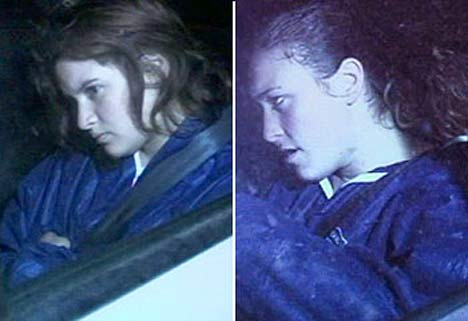
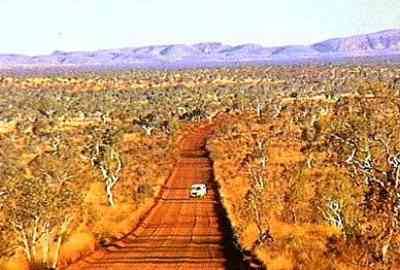
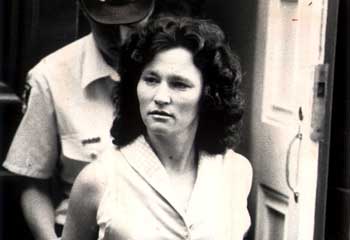
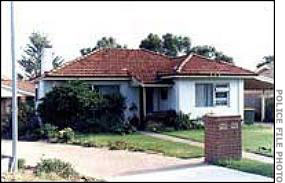
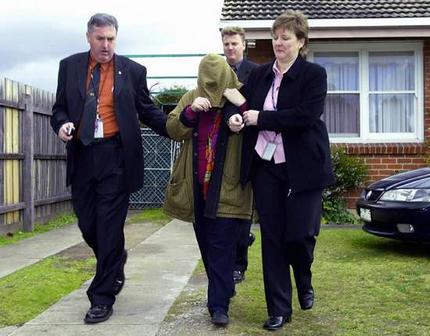
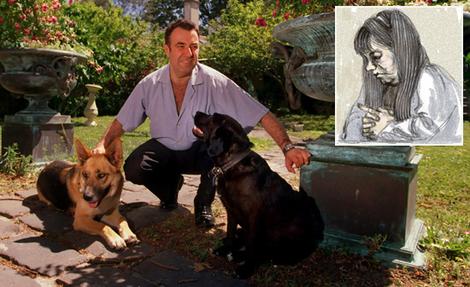

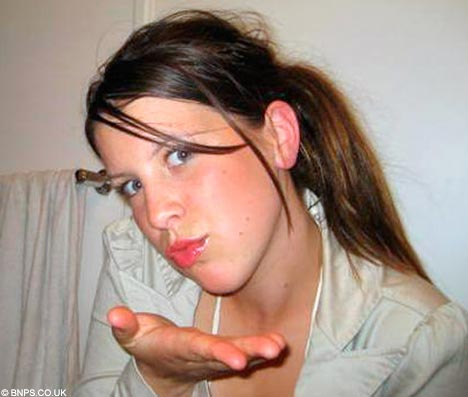




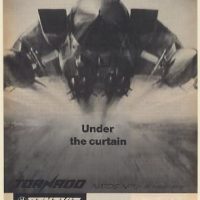


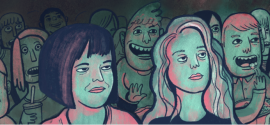
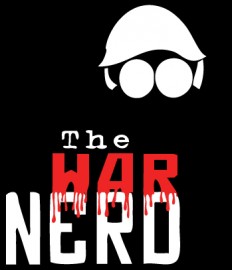
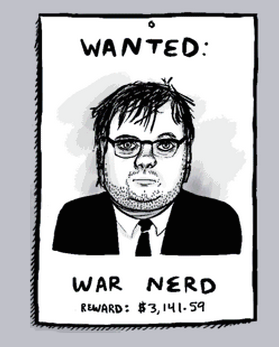


28 Comments
Add your own1. RobertD | October 8th, 2010 at 8:07 am
It feels weird reading about my home town in The Exile. Goddamn it, I already know how shitty it is here! Can’t we have another article on how the US is being looted by oligarchs or something?
2. Lavrentij "Anarchy99" Lemko | October 8th, 2010 at 9:32 am
Fine work, Mr. Glazov. I would suck on your turds!
3. Roderick | October 8th, 2010 at 3:17 pm
Finally, a return to Death Porn.
4. Hans Sprungfeld | October 9th, 2010 at 12:37 am
“invisible fairies called the junna who can only be detected by their shit-like smell”
Sometimes I get haunted by junna, too…
5. Max | October 9th, 2010 at 2:25 pm
The Western Desert lives and breathes, in 45 degrees.
6. auhsoJ | October 9th, 2010 at 9:17 pm
I never knew I could know so much about Perth. I had never heard of it beforehand. Sounds like a slam!
7. chugs | October 10th, 2010 at 5:45 am
Australia is far worse then this two bit piecec of shit article makes it out to be. death porn is all we have when you consider our nation is built on the death, rape and subjugation of entire people.
8. Charlie Starkweather | October 10th, 2010 at 7:20 am
Get an interview with Glazov on KPFK. Or give him a digital camcorder 3.1mp DV136ZB with 1.5”TFT LCD . . . at $37.99, cheap! He records random whacks; Eileen does another timeless review! Everybody wins!
9. mydick | October 10th, 2010 at 7:51 am
tl;dr
10. thus_speaketh_the_butt_trumpet | October 10th, 2010 at 12:47 pm
Remove all the guns from Arizona and you’d get exactly this.
11. dumbsaint | October 10th, 2010 at 3:45 pm
First time at this site and I read something that knows what a nang is. I’m sold.
12. SweetLeftFoot | October 10th, 2010 at 11:57 pm
I’m calling bullshit on this one. Or as the wog kids from Sunshine would say: ‘Bullfuck’.
Every Aussie knows that it is Adelaide that is the grotesque capital of our magnificent island continent.
Snowtown and The Family killings (Idiot Americans! Use Google!) are far more full on than any of the shit Ramon Buttplugov opr whatever this flog calls himself has ripped out of some shitty airport true crime book.
So a couple of fucked up streetie chicks in Perth bashed a Pommy girl with a brick? Wowzers. They should get fucking medals.
See, this is what is wrong with Perth and what fuckface doesn’t touch on. It is rapidly filling up with latent racist
Poms and openly racist Sith Efrikans. Who are made to feel well at home by the dipshits that live there.
Perth is a nothing place. It should never be mentioned on this otherwise fine site again. In American terms, Sydney is LA: sunny, lots of coke, ethnic gangs. Melbourne is New York: proper organised criminals who talk about food a lot mixed with utterly mad cunts fresh of the boat from the worlds worst hellholes.
Perth is like Des Moines. Fuck that.
The West Australian quokka fuckers are always going on about how they should secde. Fucken go and do it cunts. I’d love it. Because then the Federal Government would forcibly take you over. And I’d join some ragtag kontraktniki militia to enforce their will. God, imagine riding through the streets of Perth on top of one of the shit Abrams we have, smoking a badly rolled ciggie, letting off occasional pot shots and scruffy little Sith Efrikan and Pommy immigrant kids. Its every real Australians dream come true.
13. Yam Digger | October 11th, 2010 at 6:53 am
What ever became of that white, South African chick who used to write death porn articles for the original Exile mag?
14. SweetLeftFoot | October 12th, 2010 at 1:10 am
And what is this shit about Aborigines spearing crabs?
Crabs?
Fuck’s sake.
15. LaBoheme | October 14th, 2010 at 10:40 am
I’ve been to Perth. You’re right. It is a shit hole.
16. paul cripps | October 18th, 2010 at 10:19 am
great article ,though adelaide is surely the porn death capital of australia.i have had to work with western australian,no group of people are more brain dead stupid, more ignorant,and sadly they are not even aware when you are taking the piss out of them,which gives no pleasure at all.
17. miska | October 18th, 2010 at 2:32 pm
hey man, so why don’t you get out of that shithole and move to Europe or coastal US where it’s less boring?
18. DirtyHarry | October 20th, 2010 at 12:39 am
I’m guessing this SweetLeftFoot fag is a Melbourne hipster kid. I never heard a bigger load of bullshit in my entire life. You think you’re hard cunt you probly never even seen a gun that wasn’t in a cops holster. Acting like there’s an actual difference between Australian cities.
19. SweetLeftFoot | October 21st, 2010 at 1:18 am
From Melbourne. Not a hipster. Not a kid. Seen plenty guns. Had em pointed at me. By bad dudes.
20. Eren | October 22nd, 2010 at 1:38 am
You didn’t mention anything about the thousands upon thousands of xenophobic and illiterate bogans that inhabit this shithole city of ours.
21. Ray | October 25th, 2010 at 11:25 am
Good article, good depiction of Perth.
The problem is that it neglects the fact that Perth, or at least some parts of it, hasn’t always been like this. Fremantle in particular has quite a progressive/bohemian/radical history. Even when I grew up here in the ’80’s it was a very different place. I remember seeing one of ‘the woodchip bombers’ (two guys who attempted to blow up one of our larger woodchip mills in 1976) ride his horse naked through the streets of fremantle, on a regular basis… Ha.
But alas all of the educated trendy kids hate on Perth and fuck off to Melbourne or Europe. Fair enough I guess.. But occasionally i wonder what would happen if, rather than whinging about it, people actually did something about this shitty colonial outpost?
Just a thought…
Anyway, great article thanks for making me nostalgic.
22. DirtyHarry | October 26th, 2010 at 10:54 pm
Comments on this article really show how deep cultural cringe runs in Australia. How ashamed you are of our “backwards” country. Run to the bright lights of America and Europe! Run to the dying empire and the continent where every single country is past its prime! How fucking pathetic my countrymen have become. The left in this country deserves its fate.
23. miska | October 31st, 2010 at 2:28 pm
if you were referring to me, I”m not Australian, boso!
24. Dani | November 25th, 2010 at 7:34 am
HOW ABOUT THE SLAUGHTER IRENE LAMB CAUSED
25. pissdoffff | April 24th, 2011 at 9:06 am
cant believe the raisisam. fuk that
26. you will never fucking know | July 27th, 2011 at 2:37 am
Look, I knew jessica personally.
she was like my older sister, and i really don’t believe you guys know the whole fucking story. but i do, so why don’t you fuck off and stop making shit up! ‘porn, vampires’ All that shit! YOU DONT KNOW WHO SHE WAS. IT WAS HER FUCKING GIRLFRIEND WHO CORRUPTED HER!
Jessica was the best sister i ever had. I never said she didn’t kill anyone, i never said she doesn’t deserve what she gets.. but she deserves to come home in 25 years. yes, what she did was wrong, so wrong. But, we all make mistakes right, all the mistakes you have made as a human being, and you dare to judge someones really big mistake ( who is doing the time for it)
27. jazmyn | September 25th, 2011 at 3:06 am
i dont know about you but she made a big mistake and know one should forgive her
28. Jenn | January 2nd, 2012 at 7:38 pm
You have shit for brains asshole
Leave a Comment
(Open to all. Comments can and will be censored at whim and without warning.)
Subscribe to the comments via RSS Feed